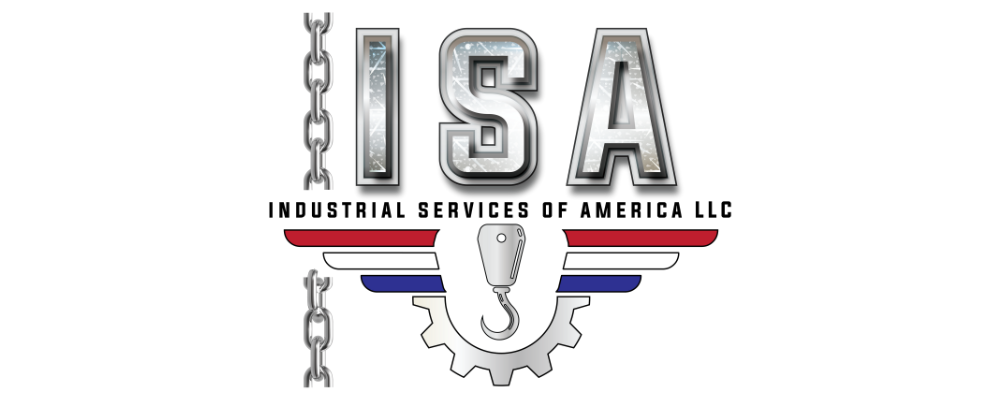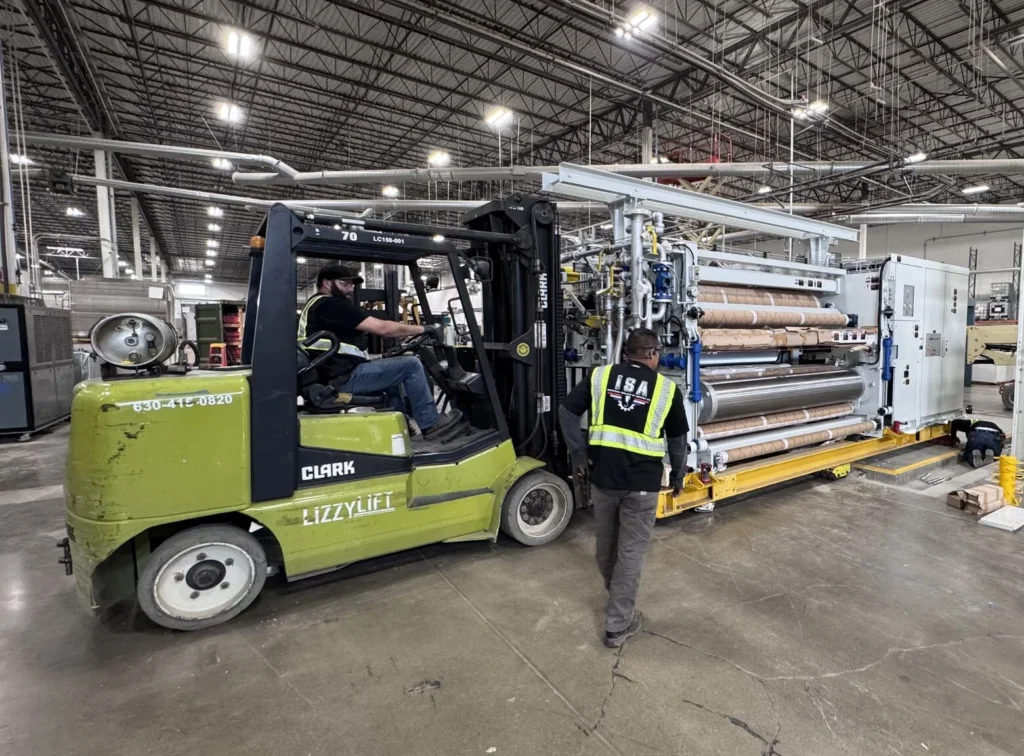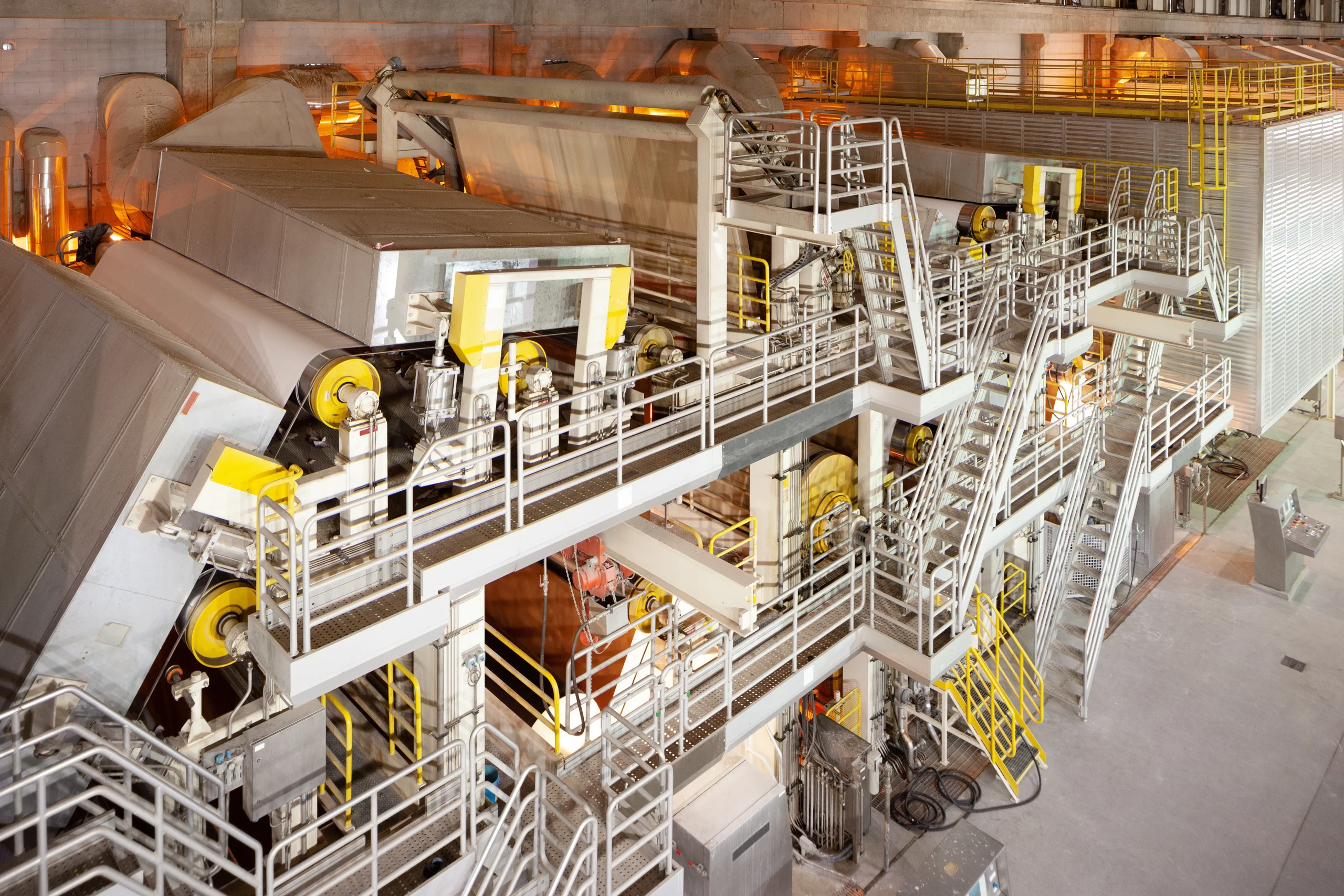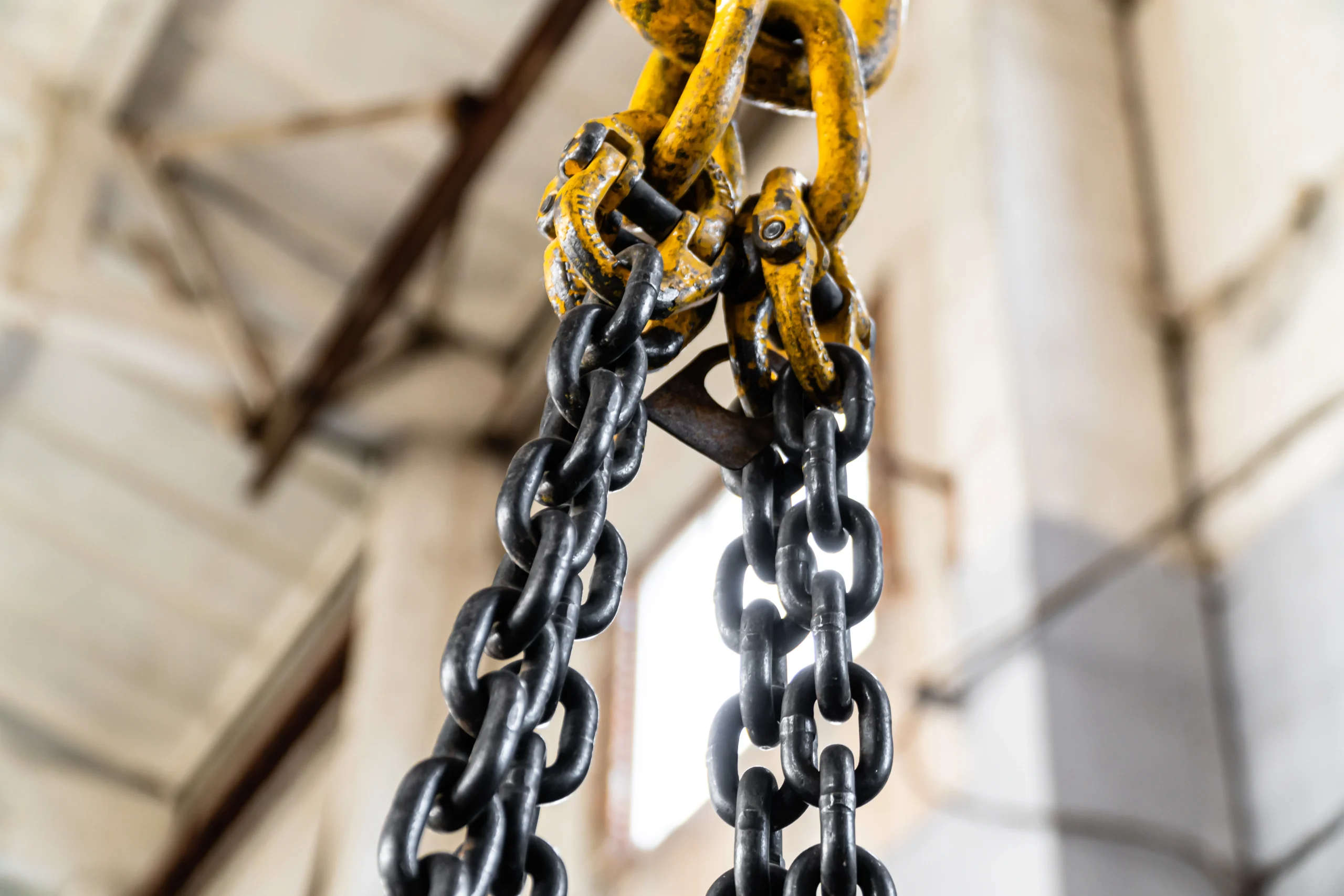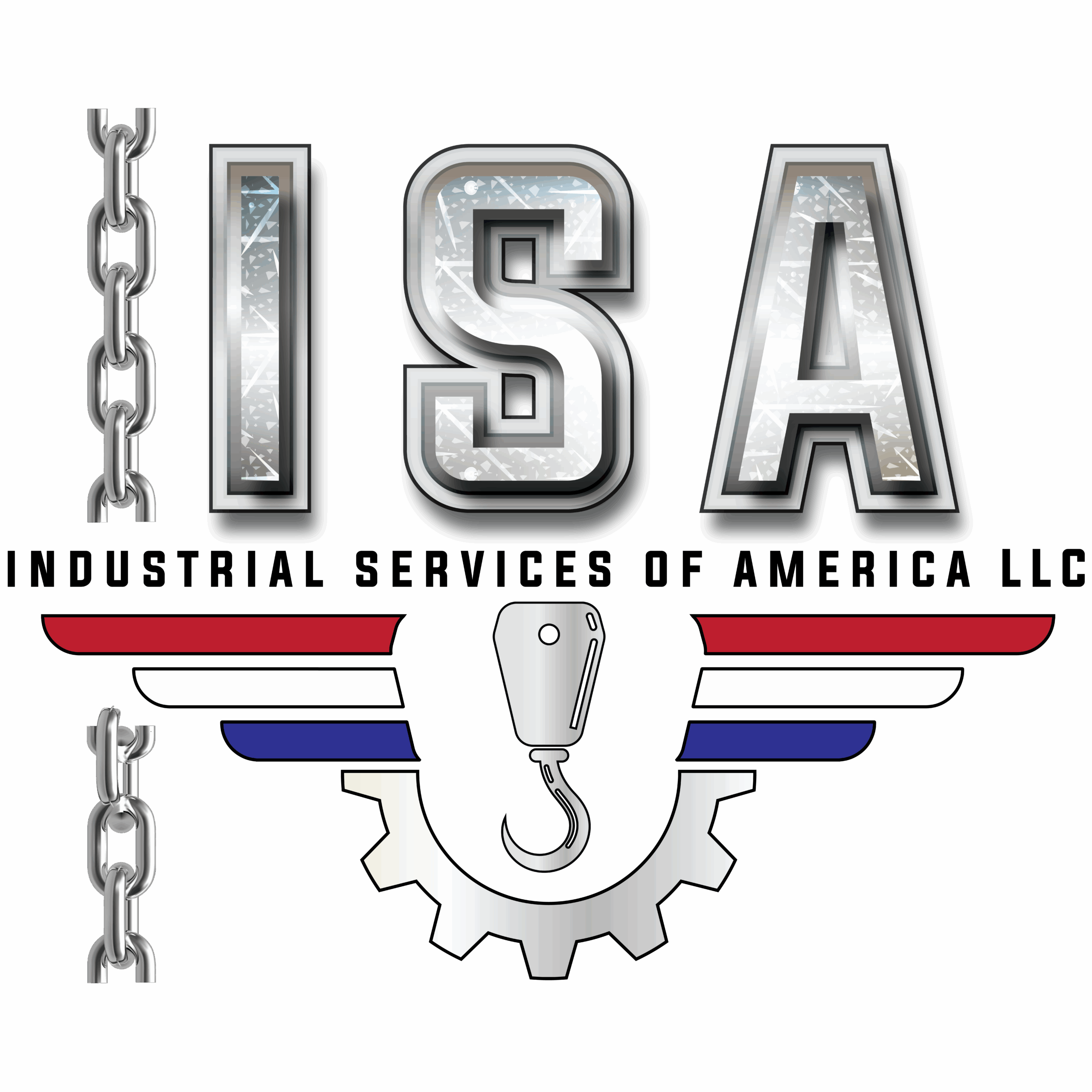Heavy equipment transport isn’t just about moving machines—it’s about protecting your business. Improper handling can cause injuries, regulatory penalties, or costly downtime if equipment is damaged along the way. Whether you’re relocating machinery across town or across state lines, safe equipment transportation comes down to preparation, compliance, and execution.
At Industrial Services of America, LLC, we’ve managed countless machinery moves across industries, from small in-plant relocations to oversized, multi-ton transports. With years of hands-on experience, specialized equipment, and strict safety protocols, our team understands the challenges businesses face when moving heavy assets. This guide shares the essential steps we recommend to reduce risks and ensure safe, compliant equipment transportation.
Why Heavy Equipment Transport Requires Extra Caution
Unlike standard freight, heavy equipment involves oversized dimensions, extreme weight, and specialized securement requirements.
The financial risk of mistakes
Equipment breakdowns, accidents, or damage during transport can cost thousands of dollars. Beyond the cost of repair or replacement, companies face downtime that delays projects and impacts revenue. For example, if a production machine arrives damaged, restarting operations may take weeks. Careful planning, inspections, and correct securement prevent these avoidable expenses.
Worker safety concerns
Transporting equipment isn’t just about protecting machinery—it’s about protecting people. Improper loading or failing tie-downs put drivers, riggers, and bystanders at risk of serious injury. Heavy machines can shift suddenly or topple if securement is insufficient. Ensuring only trained operators handle loading and unloading is one of the best ways to safeguard workers and reduce liability.
Regulatory penalties
The Department of Transportation (DOT) and OSHA have strict guidelines for cargo securement and equipment handling. Failing to follow them can result in fines, citations, or even shutdown orders. In worst-case scenarios, violations may increase liability if an accident occurs. Staying compliant with regulations protects your company’s reputation and keeps projects moving without legal setbacks.
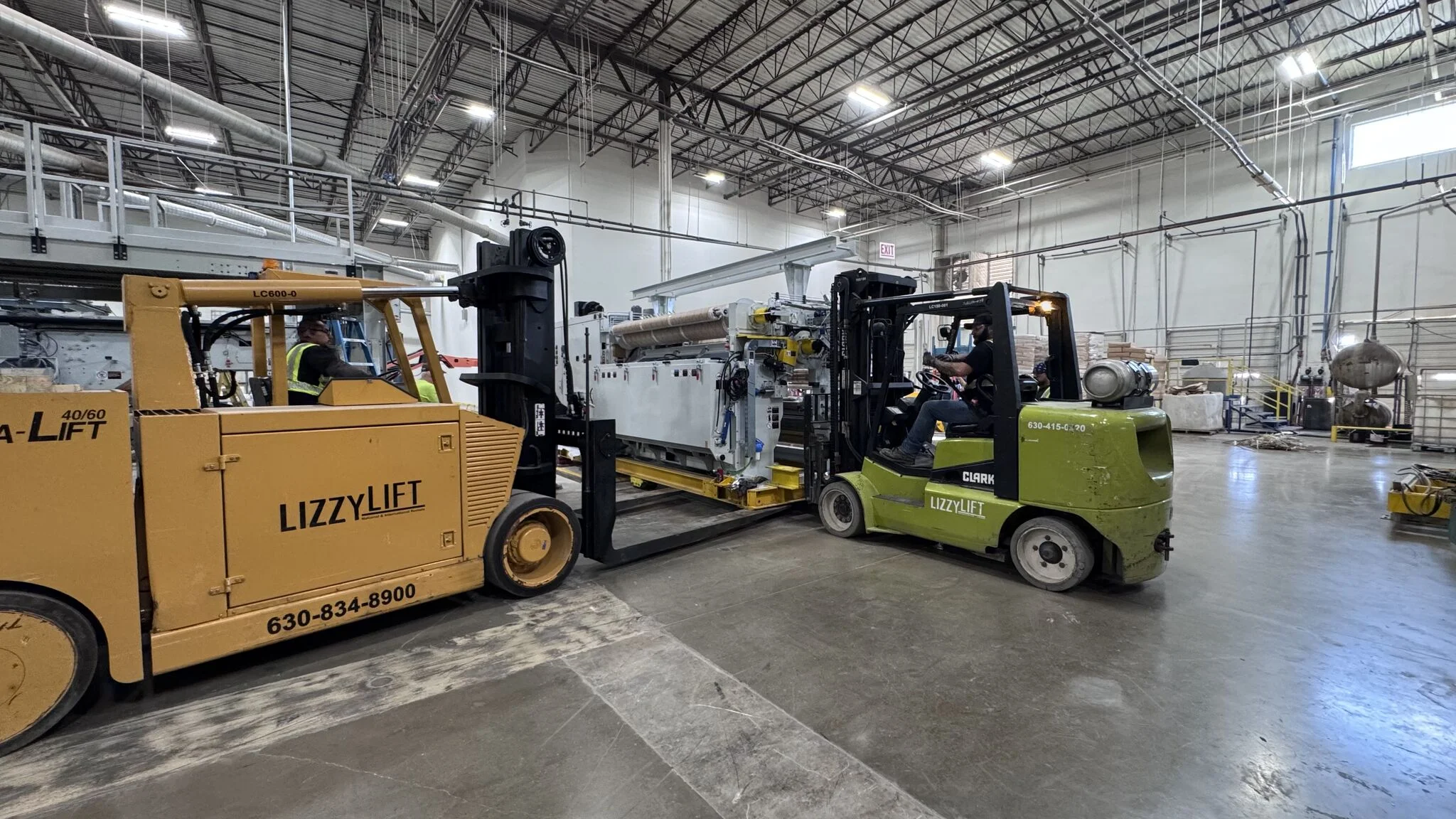
Step 1: Preparing Heavy Machinery for Transport
Before heavy equipment ever touches a trailer, it needs to be prepared properly. This step is critical for both safety and compliance since poorly prepared machinery increases the risk of accidents, leaks, or damage in transit. A thorough inspection and preparation process ensures that the equipment leaves your facility ready for a safe journey.
Inspection and documentation
Before moving equipment, conduct a thorough inspection and take photos. This step creates a record of the machine’s condition before transport. If damage occurs in transit, you’ll have proof for insurance or liability claims. Documentation also helps identify weak points—such as leaks, worn parts, or loose components—that need to be secured before loading.
Power and fluid safety
Heavy equipment often has complex power and hydraulic systems. Before equipment transportation, disconnect batteries, drain fluids if required, and cap off hydraulic lines. This prevents leaks, electrical hazards, and accidental activation during loading or transit. Skipping this step can lead to dangerous spills, environmental hazards, and compliance issues.
Protecting fragile parts
Control panels, sensors, and exposed metal surfaces are vulnerable to vibration, moisture, and dust. Using covers, padding, or rust inhibitors ensures these parts remain intact. Protecting sensitive components not only prevents costly repairs but also reduces downtime after delivery since equipment is ready to use immediately.
Step 2: Choosing the Right Trailer and Equipment
Not all trailers are designed for heavy machinery, and using the wrong one can quickly lead to safety problems. The right transport vehicle depends on the weight, height, and configuration of the equipment being moved. By selecting the correct trailer type, you reduce risks on the road and stay compliant with transportation regulations.
Flatbed trailers
Flatbeds are versatile and widely available, but they have limitations in weight capacity and clearance. They are best for medium-sized machinery with no oversized attachments. For heavier or taller loads, another trailer type is safer and more compliant.
Lowboy trailers
Lowboys are designed for extremely heavy or tall machinery. Their lowered deck provides extra clearance under bridges and power lines while offering better stability for massive loads. They are ideal for excavators, cranes, or other oversized machines.
Step-deck trailers
Step-decks offer flexibility for equipment that doesn’t quite fit on a flatbed but doesn’t require a full lowboy. They’re especially useful for loads with attachments or parts that extend above standard height limits. Choosing the right trailer helps avoid clearance violations and ensures smoother equipment transportation.
Step 3: Safe Loading Practices for Heavy Equipment
Loading is often considered the most dangerous part of heavy equipment transport. This is the stage where operators and spotters are closest to the machinery, and one mistake can cause serious injury or damage. Following safe loading practices ensures that the machine is positioned correctly and that the process is completed without unnecessary risks.
Operator expertise
Only experienced operators should drive or guide equipment onto trailers. Heavy machinery has a shifting center of gravity that makes loading dangerous if handled incorrectly. Professional operators understand how to keep machines stable, avoid ramp accidents, and position them correctly on the trailer.
Clear communication
Spotters play a critical role during loading. They provide hand signals and maintain line-of-sight to guide operators safely. Miscommunication during this step can lead to tipping, collisions, or injuries. Establishing clear roles and signals before loading begins prevents confusion and improves safety.
Stable loading areas
Loading on uneven, slippery, or debris-covered ground greatly increases risk. Ramps should be clean and dry, while the surrounding area should be free of vehicles or foot traffic. A solid foundation prevents ramp collapse and ensures equipment remains balanced throughout loading.
Step 4: Securing Heavy Equipment Correctly
Once a machine is on the trailer, it must be secured properly to withstand highway speeds and long-distance travel. Securement failures are a leading cause of accidents in equipment transport and can create serious liability for your business. Using the right tie-downs and following DOT requirements prevents shifting loads and keeps both your equipment and your crew safe.
Tie-down requirements
The DOT requires specific numbers and types of tie-downs depending on weight and dimensions. For example, loads over 10,000 lbs require at least four tie-downs, one at each corner. Chains, binders, and straps should all be rated for the load’s working weight limit.
Weight distribution
Load balance is essential for highway safety. Most of the machine’s weight should be distributed toward the front of the trailer to prevent fishtailing. Improper balance makes it harder to brake and steer safely.
Inspection checkpoints
Regulations require drivers to re-check securement within the first 50 miles, then every three hours or 150 miles. Vibrations, weather, and road conditions can loosen tie-downs. Frequent inspections ensure the load remains secure throughout the trip.
Step 5: Permits, Compliance, and Safety Requirements
Compliance with federal and state laws is not optional—it’s essential. Oversized loads, securement rules, and escort vehicle requirements all fall under strict regulations that vary depending on your route. Understanding these requirements ahead of time helps avoid fines, delays, and unexpected disruptions during transport.
DOT securement standards
Federal law governs cargo securement, ensuring loads won’t shift or fall during transit. The DOT cargo securement rules provide detailed requirements for equipment haulers.
Oversize and overweight permits
States require permits for oversized or overweight loads. These permits often dictate travel times, routes, and seasonal restrictions. Failing to obtain them can delay the equipment transportation and result in fines.
Escort and signage requirements
Oversized loads often require escort vehicles, “Oversize Load” banners, flags, and lights. These safety measures alert other drivers and reduce the risk of accidents on the road. OSHA’s materials handling guidelines also provide valuable insights for on-site safety.
The Business Value of Professional Transport Services
While it may be tempting to handle equipment moves in-house, professional transport services offer significant advantages. Experienced crews know how to plan, load, and secure machinery in ways that minimize risks and save time. Partnering with experts also provides peace of mind, knowing your investment is protected and compliant every step of the way.
Get Started with Safe Heavy Equipment Transportation
At Industrial Services of America, LLC, we believe heavy equipment transportation requires careful planning, expert handling, and a commitment to safety. Our experienced team creates customized strategies that protect your assets and reduce downtime.
We coordinate directly with your staff to prepare, load, secure, and transport machinery with precision and compliance. With our proven track record of on-time deliveries, you can trust us to handle your move safely. Call us today at (951) 805-7868, email info@isarigging.com, or fill out our online form to get a free quote and a tailored transport plan.
